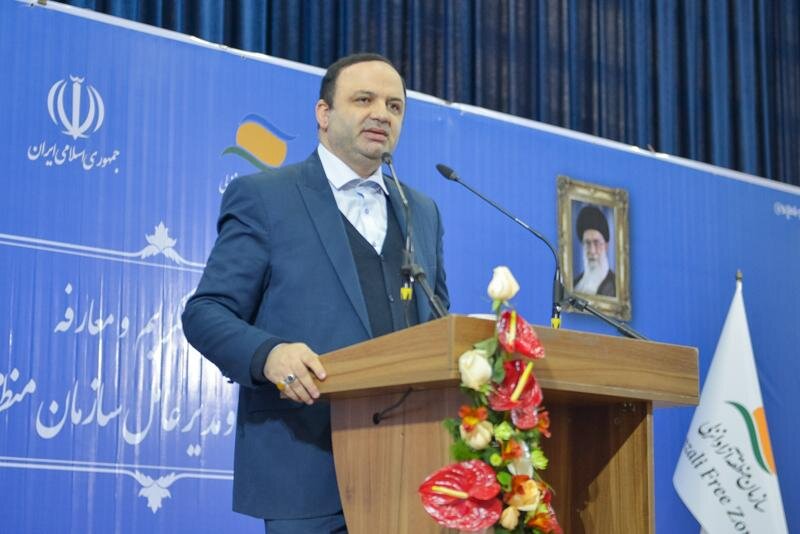New secretary of Free Zones High Council appointed

TEHRAN – Iranian Finance and Economic Affairs Minister Abdolnaser Hemmati has appointed Reza Masrour as the new secretary of the Free Zones High Council, IRIB reported.
In a decree on Monday, Masrour was tasked to take all the necessary measures for activating the capacities of free commercial-industrial and special economic zones in order to increase non-oil exports and to attract domestic and foreign investment while transferring new technologies into the country.
Masrour is replacing Hojatollah Abdolmaleki who was in charge of the mentioned position since November 2022.
In last December, Abdolmaleki outlined 10 new strategies to increase investment and export in the country’s free and special economic zones, the news portal of Iranian free zones (Freena) reported.
He made the remarks in a meeting with the deputy heads of the country’s free zones on the sidelines of the second EAEU Exclusive exhibition in Tehran.
Abdolmaleki stated that the mentioned strategies mainly focus on a network of cooperation among the investment and economic departments of the country’s free zones.
“Joint marketing between the free zones in the fields of income, investment, logistics, and export is the main purpose of the said network,” he explained.
Implementing a comprehensive plan for developing logistics and re-export from free zones by using the capacities of combined transport and transit among free zones is another part of the mentioned strategies, the official said.
“The third strategy is the use of the capacity of international organizations and agreements such as the Eurasian Economic Union. Shanghai, BRICS, ECO, etc.,” he added.
The official stated that identifying the advantages and distinctive features of free zones and introducing them to each other to benefit from the relative advantages of each zone in the network structure is another part of the mentioned coordinated strategies.
“The fifth strategy is to use the passenger goods model to maximize the income of free zone organizations and the sixth strategy, is to attend exhibitions and domestic and international business events to introduce the investment opportunities of free zones in line with the continuation of the path taken this year,” Abdolmaleki said.
The seventh strategy would be to determine a supply chain of goods among free zones in such a way that goods are exchanged, sold, or supplied in a cooperative network, the official said, adding: “using China's One Belt One Road plan with a focus on free zones, determining a comprehensive tourism network of free and special zones to outline the common interests and goals are the eighth and ninth parts of this program; and monetary, banking, and financial cooperation in the form of drawing up a cooperation style sheet to finance construction projects and investment is the tenth strategy.”
The establishment of free trade zones (FTZs) in Iran dates back to the Iranian calendar year 1368 (March 1989 - March 1990) following the fall in the country’s oil income in the preceding year which prompted the government to promote non-oil exports.
The first two free trade zones of Iran were established in the south of the country. The first one was Kish Free Trade Zone established in 1368 on Kish Island in the Persian Gulf and the second one was Qeshm Free Trade Zone established the year after on Qeshm Island in the Strait of Hormuz.
Some five other free trade zones have been also established in the country since then, including Chabahar in southeastern Sistan-Baluchestan Province, Arvand in southwestern Khuzestan Province, Anzali in northern Gilan Province, Aras in East-Azarbaijan Province and Maku in West-Azarbaijan Province, both in the northwest of the country.
The development of existing free trade zones and the establishment of new FTZs has become one of the major economic approaches of the Iranian government.
EF/MA
Leave a Comment